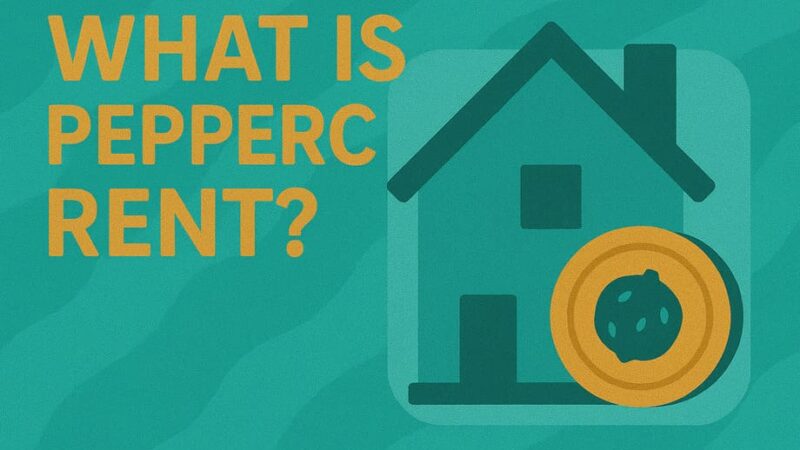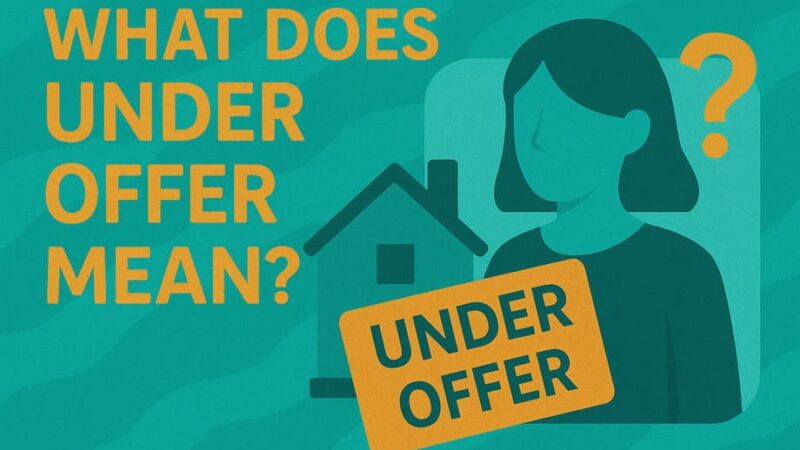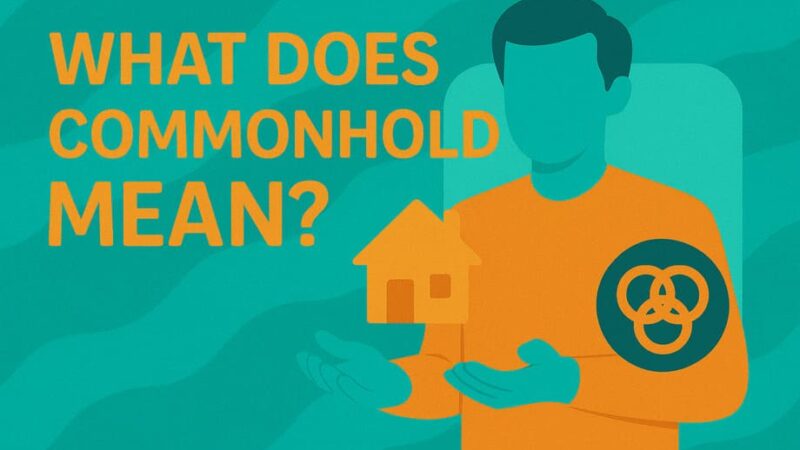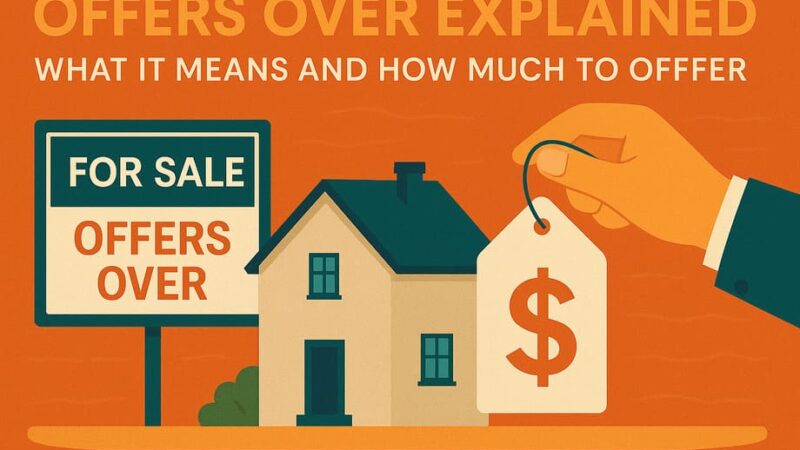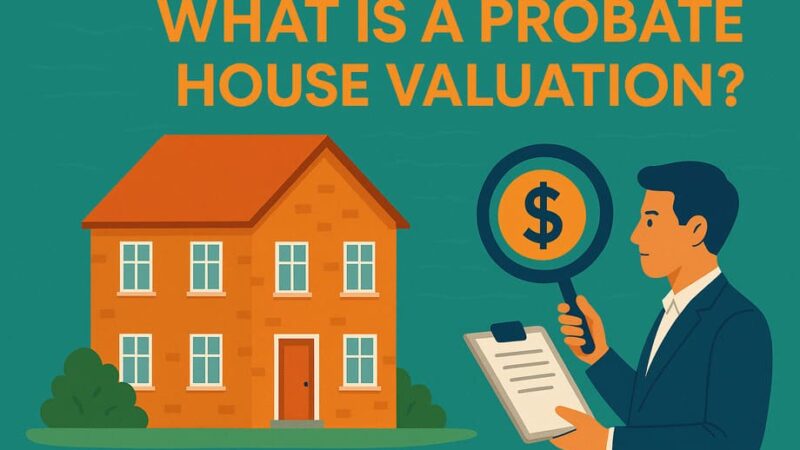What Is Negative Equity in Property?
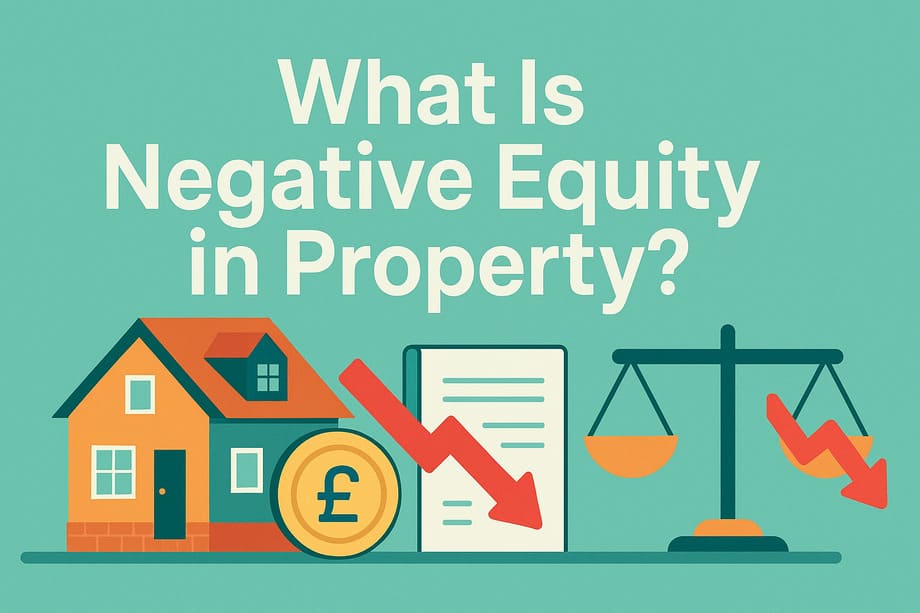
Imagine discovering that your home your biggest financial asset is now worth less than what you owe on your mortgage. This unsettling scenario is called negative equity, and it’s a reality that affects an estimated half a million properties in the UK today.
Negative equity isn’t just a number on a statement; it can trap you in your current home, prevent you from remortgaging to better rates, and turn what should be your financial security into a source of stress. While it might sound like a distant concern, recent economic volatility, rising mortgage rates, and fluctuating house prices mean negative equity is closer to many homeowners’ reality than they might think.
The good news? Negative equity isn’t permanent, and there are proven strategies to escape it. Understanding what causes it, how it affects you, and most importantly, how to get out of it can help you navigate this challenging situation with confidence.
Negative Equity – The Definition
Negative equity occurs when the outstanding balance on your mortgage exceeds the current market value of your property. In simple terms, you owe more money to your lender than your home is worth today.
Here’s how it works in practice:
Example 1: The Basic Scenario
- You bought a house for £250,000 with a £220,000 mortgage
- Property values in your area have fallen, and your home is now worth £200,000
- Your outstanding mortgage balance is still £210,000 (after some payments)
- Result: You’re in negative equity by £10,000
Example 2: The High LTV Scenario
- You purchased with a 95% mortgage: £190,000 loan on a £200,000 property
- Even a modest 10% price drop brings the property value to £180,000
- You still owe approximately £185,000 on the mortgage
- Result: You’re in negative equity by £5,000
Key Point: Negative equity doesn’t affect your credit score directly, as long as you continue making mortgage payments. It becomes a practical problem only when you need to sell, remortgage, or borrow against your property.
The concept is also known as being “underwater” or “upside down” on your mortgage—terms that capture the feeling of being financially submerged by circumstances beyond your control.
How Does Negative Equity Happen?
Understanding the causes of negative equity helps you recognise the warning signs and take preventive action. While property markets naturally fluctuate, certain conditions make negative equity more likely.
Falling House Prices
Market-wide price drops are the most common cause of negative equity. These can result from:
Economic Recessions: During economic downturns, unemployment rises, consumer confidence falls, and fewer people can afford to buy homes. Reduced demand leads to falling prices. The UK experienced significant negative equity during the early 1990s recession and again following the 2008 financial crisis.
Interest Rate Increases: When the Bank of England raises interest rates to combat inflation, mortgage costs increase dramatically. Higher monthly payments price out many potential buyers, reducing demand and pushing prices down. Recent rate rises from 0.1% in 2021 to 5.25% in 2023 created affordability challenges for many buyers.
Local Economic Factors: Sometimes specific areas experience price falls due to local issues such as:
- Major employer closures or relocations
- Infrastructure problems or planning disasters
- Changes in local amenities or transport links
- Oversupply of new housing developments
Seasonal and Cyclical Factors: Property markets naturally have cycles. Buying at the peak of a market cycle increases your risk of experiencing short-term negative equity.
High Loan to Value Mortgages
Borrowing with a small deposit significantly increases negative equity risk because you start with minimal equity cushion.
The Risk Calculation:
- 95% LTV mortgage: A 6% price drop puts you in negative equity
- 90% LTV mortgage: An 11% price drop puts you in negative equity
- 80% LTV mortgage: A 21% price drop puts you in negative equity
- 75% LTV mortgage: A 26% price drop puts you in negative equity
Why High LTV Increases Risk:
- Smaller buffer: Less equity means less protection against price falls
- Interest-only mortgages: If you’re not paying down the principal, you’re not building equity to offset price drops
- New-build premium: Many new-build properties sell at a premium that may not be sustained in the resale market
Additional Risk Factors:
- Second mortgages or equity release: Taking additional loans against your property increases total debt
- Buying at market peaks: Purchasing when prices are artificially high
- Insufficient deposit: Using gifted deposits or borrowing deposit funds rather than saving
Why Negative Equity Is a Problem
While negative equity doesn’t directly impact your daily life if you’re staying put and meeting mortgage payments, it creates significant financial constraints that can affect your future plans and financial flexibility.
Selling Difficulties
The fundamental problem: When you sell a property in negative equity, the sale proceeds won’t cover your outstanding mortgage, leaving you with debt but no asset.
What this means in practice:
Shortfall Payments: If you sell for £180,000 but owe £200,000, you must find £20,000 from other sources to clear the mortgage. This money typically comes from:
- Personal savings
- Loans from family
- Unsecured personal loans (expensive option)
- Arrangements with your lender
Chain Complications: Negative equity can break property chains. If you can’t afford the shortfall, you can’t complete your sale, affecting everyone in the chain.
Limited Buyer Pool: Some buyers may be deterred by properties in negative equity areas, knowing they face similar risks.
Lender Consent Required: You need your mortgage lender’s permission to sell in negative equity. They may:
- Agree to the sale and arrange repayment terms for the shortfall
- Refuse the sale if they believe you can’t repay the deficit
- Require you to use specific estate agents or marketing approaches
Refinancing Challenges
Product Transfer Limitations: While many lenders (including major banks like HSBC and Nationwide) allow existing customers to switch to new rates even in negative equity, your options are limited. You can typically:
- Switch to a new rate with your current lender (product transfer)
- Cannot: Shop around for better deals with other lenders
- Cannot: Release additional equity for home improvements or other purposes
Standard Variable Rate Trap: If your fixed rate ends and you can’t remortgage elsewhere, you’ll likely move to your lender’s Standard Variable Rate (SVR), which can be significantly higher—sometimes 8%+ compared to fixed rates around 4-5%.
Future Borrowing Restrictions: Negative equity affects your ability to:
- Secure home improvement loans
- Consolidate other debts against your property
- Access equity for investment opportunities
- Help family members with deposits
Stress Testing Difficulties: Even when you can remortgage, lenders’ affordability calculations become more stringent when you have no equity buffer.
Can You Get Out of Negative Equity?
Yes, absolutely. Negative equity is typically a temporary condition, and there are several proven strategies to escape it. The key is choosing the right approach for your circumstances and maintaining a long-term perspective.
Overpaying Your Mortgage
This is often the fastest way to build equity, directly reducing the amount you owe and moving closer to positive equity.
How Overpayments Work:
- Most mortgages allow up to 10% annual overpayments without penalty
- Some lenders allow unlimited overpayments
- Every £1 of overpayment reduces your mortgage balance by £1
- Over time, you also save interest on the reduced balance
Example Impact:
- Outstanding mortgage: £200,000
- Property value: £190,000 (£10,000 negative equity)
- Monthly overpayment: £500
- Result: After 20 months, you’ve eliminated the negative equity
Sources for Overpayments:
- Annual bonuses or tax refunds
- Inheritance or gifts
- Savings from reduced household expenses
- Income from side hustles or overtime
Important Considerations:
- Check your mortgage terms for overpayment limits and penalties
- Consider whether high-interest debts should be paid off first
- Maintain emergency savings before using funds for overpayments
- Overpayments are irreversible—you can’t withdraw this money later
Waiting for Property Prices to Rise
Time can be your ally if you can afford to stay in your current property and continue meeting mortgage payments.
Why This Strategy Works:
- Historical trend: UK property prices have generally increased over the long term
- Market cycles: Property markets are cyclical; downturns are typically followed by recovery
- Mortgage payments: Each month reduces your outstanding balance, building equity
- Inflation impact: Inflation can help erode the real value of your debt over time
Current Market Context (2024-2025):
- Base rate reductions: Bank of England has cut rates from 5.25% to 4%, with further cuts expected
- Mortgage rate improvements: Average fixed rates falling from peaks above 6% to around 4-5%
- Market recovery signs: Increased activity and modest price growth in many areas
- Expert predictions: Savills forecasts 23% price growth over the next five years
When Waiting Makes Sense:
- You’re comfortable in your current home
- Mortgage payments are affordable
- Local area shows signs of recovery or investment
- You’re not planning major life changes requiring a move
Risks of Waiting:
- No guarantee prices will recover quickly
- Opportunity costs of staying in unsuitable property
- Continued exposure to interest rate changes
Government or Lender Support Options
While specific government schemes for negative equity are limited in 2025, there are several support mechanisms available:
Lender Forbearance Programs:
- Payment holidays: Temporary reduction or suspension of payments during hardship
- Term extensions: Lengthening your mortgage term to reduce monthly payments
- Interest-only periods: Temporary switch to interest-only payments
- Voluntary arrangements: Negotiated payment plans if you’re struggling
Mortgage Market Improvements:
- Enhanced affordability: Recent changes allow borrowing up to £28,000 more on average (Nationwide)
- Flexible criteria: Some lenders relaxing income multiples from 4.5x to higher ratios
- Product innovations: New mortgage products designed for different circumstances
Professional Support Services:
- MoneyHelper: Free government-backed advice service
- Citizens Advice: Independent guidance on debt and housing issues
- StepChange: Debt charity offering free advice and support
Legal Protections:
- Repossession processes: Courts require lenders to demonstrate all alternatives explored
- Breathing space scheme: 60-day protection from creditor action while seeking debt advice
- Time limits: Lenders cannot pursue shortfall debts indefinitely (typically 6 years)
Final Thoughts – Dealing With Negative Equity
Negative equity can feel overwhelming, but it’s important to remember that millions of UK homeowners have successfully navigated this challenge. The key is to approach it strategically, stay informed about your options, and maintain perspective on the long-term nature of property ownership.
Your immediate priorities should be:
- Assess your situation accurately by getting a proper valuation and confirming your mortgage balance
- Continue making mortgage payments to avoid additional complications and protect your credit score
- Explore all available options rather than assuming you’re trapped
- Seek professional advice if you’re struggling with payments or planning major life changes
Remember the bigger picture: Property ownership is typically a long-term commitment, and short-term market volatility doesn’t negate the fundamental benefits of owning your home. Most periods of negative equity are temporary, especially for homeowners who can remain in their properties and maintain their mortgage payments.
Looking ahead, current market conditions suggest reasons for cautious optimism. With interest rates falling, mortgage affordability improving, and expert predictions of moderate price growth, many homeowners currently in negative equity may find their situation improving over the next few years.
The most important thing is not to panic or make hasty decisions. Whether you choose to overpay your mortgage, wait for market recovery, or explore alternative options, the key is making informed decisions based on your specific circumstances and long-term goals.
Negative equity is a financial challenge, not a financial disaster. With the right approach and professional support when needed, you can navigate through this situation and emerge with your homeownership dreams intact. Your home remains your home, regardless of temporary market fluctuations, and maintaining that perspective can help you make the best decisions for your future.
Last Updated on September 8, 2025 by James Cartwright



